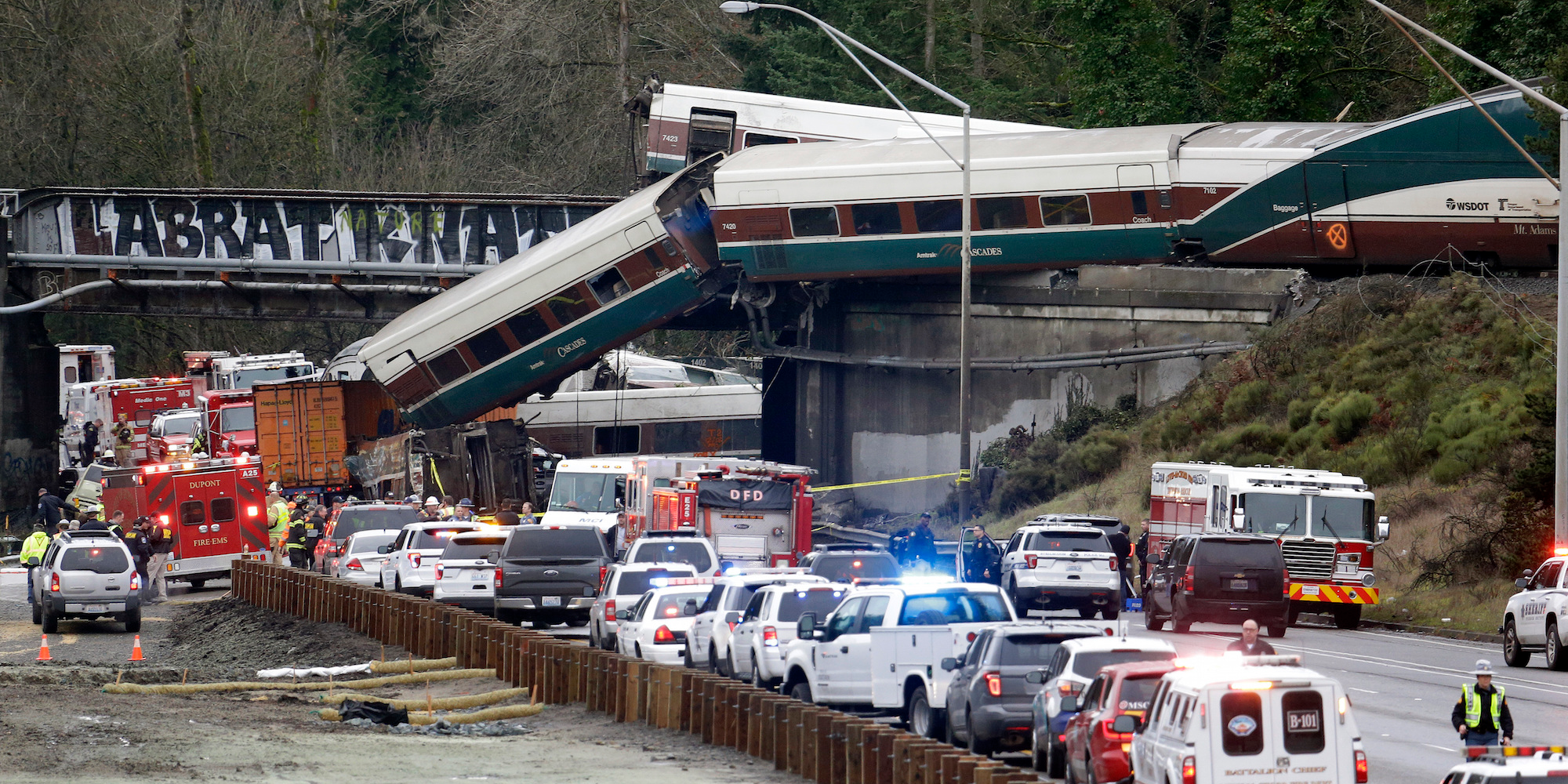- The train that derailed in Washington was going 80 mph in a 30 mph zone.
- The National Transportation Safety Board cited data from an on-board recorder, which showed the train going much too fast.
- It said it was “too early to tell” why it was going so quickly along a bend.
- The crash came a month after the NTSB criticized Amtrak’s “safety culture.”
- The death toll so far stands at three, with 10 people severely injured.
The Amtrak train that derailed in Washington state on Monday was traveling at more than double its speed limit, federal investigators have said.
Preliminary information from the train’s event data recorder showed that the train was traveling 80 mph in a 30 mph zone when it derailed, US National Transportation Safety Board member Bella Dinh-Zarr said in a press conference Monday night.
An event data recorder documents a vehicle’s movements over a period of time, like a plane’s black box.
Dinh-Zarr said it was “too early to tell” why the train was going so quickly, and that the NTSB does not yet know what caused the train to derail.
The train was making its first journey along a new, faster route from Seattle, Washington to Portland, Oregon, when it derailed derailed at 7.34 a.m. local time.
Several of its train cars flipped onto the Interstate 5 highway in Washington state. At least three people have died, ten have severe injuries, and at least 50 more received some form of medical treatment, according to the Associated Press.

A document from the Washington State Department of Transportation, cited by the Associated Press, instructs passenger trains to reduce their speed from 79 mph to 30 mph before the tracks curve across Interstate 5, which is where the derailment took place.
A spokeswoman for Sound Transit, a regional agency that owns the tracks, said that there are speed limit signs 2 miles ahead of the point where the trains need to slow down.
The deadly crash comes a month after the National Transportation Safety Board accused Amtrak of ignoring safety procedures and operating a "fractured safety program."
The board's chairman, Robert Sumwalt, wrote on November 14: "Amtrak's safety culture is failing and is primed to fail again, until and unless Amtrak changes the way it practices safety management."
Another Amtrak train derailed in Pennsylvania in April 2016.

